Spotlight on Women
Meet the Tandon researchers, innovators, technologists and makers shaping, and in some cases, saving the world.
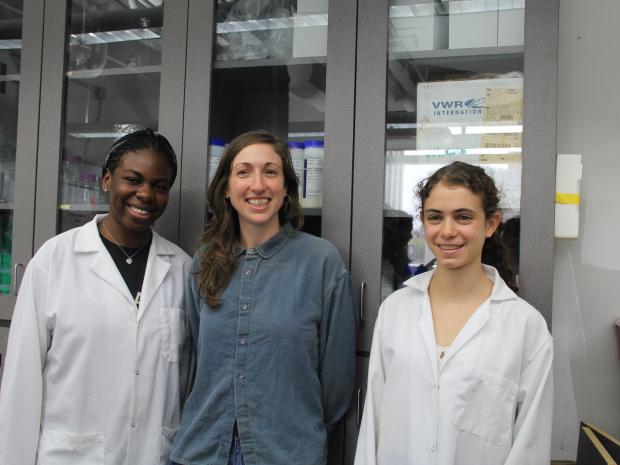
Jelena Kovačević

As the first female dean in NYU Tandon history, Jelena Kovačević increased the number of women students and faculty members and investing in societally important research areas like cybersecurity, health, and sustainability. She's readying the world’s next generation of engineers because we are ready for cleaner energy sources, more liveable urban areas, more personalized medical diagnostic tools, and all the other things that are Tandon Made.
Daniela Blanco
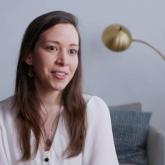
It’s obvious the chemical manufacturing industry needs transformation, so while still a doctoral student, alum Daniela Blanco (‘20) helped co-found Sunthetics, a startup based on an innovative method of using water, plant waste, and solar energy to manufacture nylon, instead of fossil fuels. Now she’s turning her focus to leveraging artificial intelligence to optimize electrochemical processes, demonstrating that some heroes wear lab coats instead of capes.
Rumi Chunara

Throughout the COVID-19 pandemic, telemedicine became a necessary entry point into the process of diagnosis, triage and treatment, but, as Rumi Chunara, an assistant professor in the Department of Computer Science and Engineering at NYU Tandon, and in the Department of Biostatistics at NYU School of Global Public Health, discovered, there were significant racial and ethnic disparities in its use. Chunara explains that the roots of disparate use are complex and reflect individual, community, and structural factors, many of which are due to systemic racism, but hopes that her research can be used to inform tool design and system-level efforts to promote digital health equity.
Anna Choromanska
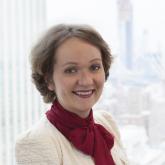
Assistant Professor of Electrical and Computer Engineering Anna Choromanska, who runs Tandon’s ECE Machine Learning Lab and is also affiliated with the NYU Center for Data Science and NYU Center for Urban Science and Progress (CUSP), is shaping the future of machine learning. Winner of an IBM Faculty Research Award and a Sloan Fellowship, among other laurels, she explores optimization, large data analysis, and robotics and autonomy, and her work has been leveraged by such major companies as NVIDIA and Baidu.
Elza Erkip

It’s a popular trope that superheroes often go unrecognized: think Clark Kent before he dons his Superman suit. That goes for engineering heroes as well. While improvements in wireless communications are, by their very nature, invisible to lay users, Elza Erkip’s work greatly benefits wireless systems — whether consumers realize it or not. Her seminal research on 5G communication — which emphasizes energy efficiency, longer battery life, and smaller carbon footprints — has made her one of the world’s most-cited computer scientists, and while she may go unknown to the general public, Thomson Reuters has deemed her one of “the World’s Most Influential Scientific Minds.”
Regine Gilbert
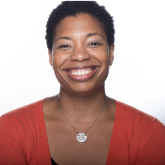
Can a user experience designer save the world? Maybe not, but they can make it a more accessible and inclusive place. That’s the mission of Industry Assistant Professor Regine Gilbert, whose students are learning to think about who will be using the systems and products they design. She teaches them to ask themselves: Could someone vision-impaired employ an assistive reading device to decipher text or have the designers included animations and emojis that might make that difficult? If they were hearing impaired or had limited mobility, what provisions could be useful? Gilbert, the author of Inclusive Design for a Digital World: Designing with Accessibility in Mind, says we’re living in an era of progress, but it can’t be characterized as truly progressive if not everybody can participate.
Rachel Greenstadt
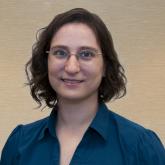
A celebrated figure among those seeking to address social ills via their computer science skills, Rachel Greenstadt works at the intersection of online security and human behavior to demonstrate that hackers can often be heroes. One recent project involved user-generated content sites such as Wikipedia, which routinely block contributions from users of privacy-enhancing proxies like Tor because of the perception that proxies are a source of vandalism, spam, and abuse. She points out that most individuals using proxies — from journalists seeking to protect their sources to citizens living in countries where internet access is excessively restricted — are responsible, upstanding people, and to prove it she painstakingly studied more than 11,000 edits made by Tor users able to bypass Wikipedia’s ban. She discovered the ban to be unnecessary and even counterproductive: on average, Tor users contributed higher-quality changes to articles than other editors — intent not on making mischief but on making Wikipedia a more accurate, trustworthy source of information.
Amy Hurst
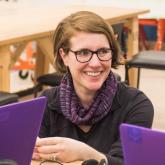
Director of the NYU Ability Project Amy Hurst seeks to empower people with motor, cognitive, or sensory impairments, and she’s especially excited about the possibilities presented by 3D printing. (One of her recent projects involved a young client having difficulty manipulating the stylus of her iPad because of an anomaly in the shape of her hands; Hurst created a custom 3D model of a grip that could be used to hold the stylus — and modified to grasp a fork, hairbrush, pen, or any other needed implement. She then developed software that enabled the customized grips to be 3D-printed in whatever color the client chose, making them more like fashion accessories than medical devices.) Her joint appointment to Tandon’s Department of Technology, Culture and Society and to Steinhardt’s Department of Occupational Therapy is indicative, she says, of just how interdisciplinary the field of assistive technology can and should be.
Elizabeth Henaff
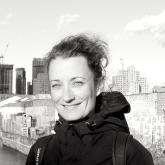
What happens if climate change causes sea levels to rise, and high-intensity storms to pummel our cities? If drainage systems become overwhelmed and sewage floods streets and homes? Of the myriad impacts predicted to accompany climate change, flooding is expected to have an outsized influence on public health and infrastructure in urban areas, since the waters will contain a diverse array of contaminants, including industrial chemicals and viral pathogens. Elizabeth Hénaff is studying how urban flooding changes the microbial community of urban surfaces, investigating the ways in which the resulting microbial fingerprint evolves over time after a flood event, and determining how long it takes for the community to return to a pre-flood profile. With cities now home to more than half of the world’s population — an estimated four billion people — and that number only increasing, her research has enormous significance.
Bertha Jimenez
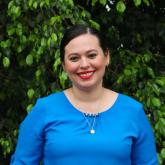
When alum Bertha Jimenez (‘16) learned that much of the grain used by breweries ended up in landfills, she discovered a way to upcycle it into ultra-nutritious and tasty flour, now being used by professional bakers across the country. Her company, RISE, is proving that with enough vision and engineering know-how, sustainability and deliciousness can go hand-in-hand.
Debra Laefer

Unlike the comic book Gotham City, New York doesn’t have Batman around to save it in a crisis. It does, however, have engineering hero Debra Laefer, an NYU Tandon professor of civil and urban engineering who’s bolstering the ability of NYC and, ultimately, of cities nationwide to prepare for and respond to crises and disasters. By designing a seamless 3D data storage and visualization system, she’s making sure that city officials have the robust, transparent, and easy-to-access information they need to assess the threats and vulnerabilities of their vital infrastructure systems, identify points of failure, and avoid costly cascading effects, so they can be heroes too.
Jin Montclare

At Jin Montclare’s lab, the potential applications of engineered proteins seem unlimited: from drug delivery to tissue regeneration to the fabrication of novel nanomaterials for electronics. Known for her mentorship, especially of women and other underrepresented groups, the professor of Chemical and Biomolecular Engineering also sees unlimited potential in her students, who serve as valued research partners as she discovers new ways of removing pesticides from crops, ferry chemotherapeutic agents to cancer cells in synthesized macromolecules, and much more.
Benedetta Piantella
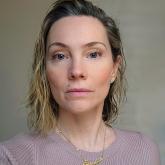
Benedetta Piantella has been interested in helping solve societal problems since 2004, when she was vacationing in Sri Lanka the very day a devastating tsunami hit. She subsequently founded T4D Lab, a research and development facility that focuses on designing, prototyping, field-testing, and deploying solutions aimed at fostering climate resilience. Now, at Tandon, she’s developing a smart charge controller that offers flexible, scalable energy access and emergency backup power; working at the intersection of art and technology to reimagine what the Internet might look like if servers were solar-powered; and teaching her students the socioeconomic and geopolitical factors that should be informing their work.
Elisa Riedo
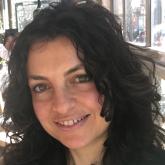
A holy grail for orthopedic research is a method for not only creating artificial bone tissue that precisely matches the real thing, but does so in such microscopic detail that it includes tiny structures potentially important for stem cell differentiation, which is key to bone regeneration. Now, health-researching hero Elisa Riedo has taken a major step by creating the exact replica of a bone using a system that pairs biothermal imaging with a heated “nano-chisel.” Her work could open new doors to disease modeling, in vitro cell research on targeted therapies, drug screening and much more. She is also stepping into a new role as one of our Chief Inclusivity Officers, fostering diversity, equity, and inclusion here at NYU Tandon.
Andrea Silverman
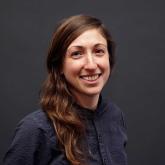
Andrea Silverman believes that engineers who design water and wastewater treatment systems should understand the public health risks of waterborne microbial and chemical contaminants — and that public health professionals should know the benefits and limitations of technologies used to treat water and assure its safety. She’s straddling those worlds to ensure that residents of New York City and beyond stay safe, healthy, and hydrated.
Julia Stoyanovich

Julia Stoyanovich explains that AI systems are dependent on the quality and the representativeness of the data being used to train them, and If the data includes only certain groups of people, the system isn’t going to perform accurately for other groups. That’s of special concern when those systems are deciding who gets a mortgage, a job, or a chance of parole. As the founder of NYU Tandon’s Center for Responsible AI, she’s making it her mission to root out bias; flag unfair, prejudicial systems; and teach students about the social implications of the technology they build. When the devil is in the details, and the details are in the data, it takes data scientists and engineers like Stoyanovich to step up and speak out.

